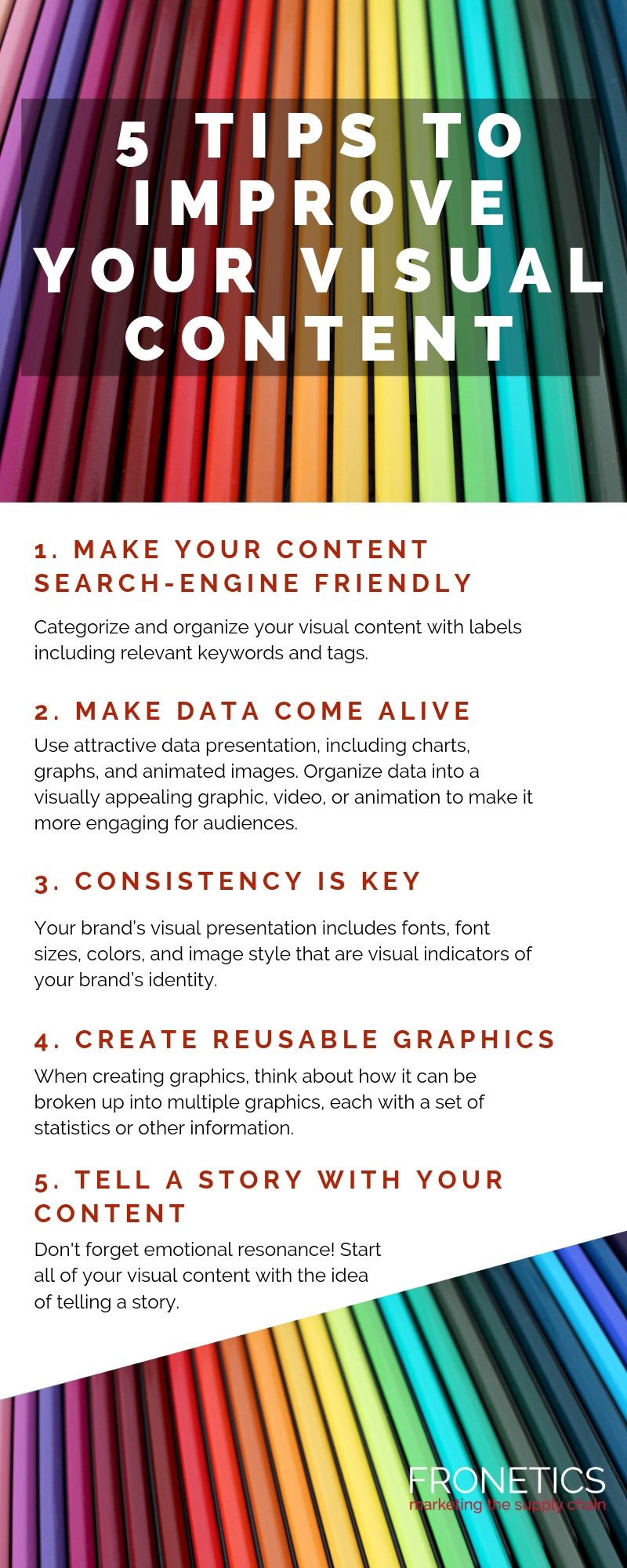
by Fronetics | Aug 29, 2019 | Blog, Content Marketing, Current Events, Logistics, Marketing, Social Media, Supply Chain
Also this month in social media news: Facebook adds Instagram scheduling to Creator Studio and Twitter launches 6-second video ad bidding.
Highlights:
- Facebook is adding an easy option for users to create a still-image slideshow in its Stories feature.
- LinkedIn’s new audience engagement insights will offer improved audience discovery, content recommendations, and industry benchmarking.
- Marketers can now use Facebook’s Creator Studio app to schedule posts on Instagram.
After a somewhat tumultuous July in the world of social media news, August has been calmer. Our updates this month are less concerned with reproaches of Facebook from the Fed and more with news that directly impacts marketers, particularly in the B2B sector. LinkedIn has partnered with third-party providers to offer a robust set of audience engagement insights, and Instagram made the welcome announcement that posts can now be scheduled the Facebook Creator Studio App.
As Stories’ popularity continues to grow, particularly on Instagram, Facebook is working diligently to make its native Stories feature an attractive place for users to post. As part of an ongoing series of updates, this month the social media giant rolled out two new Stories features geared to boost usage. Keep reading for more details on the social media news this month.
Facebook Announces Continued Updates to Stories
As the popularity of Instagram Stories continues to grow, Facebook remains tenacious in trying to encourage usage of its Stories feature. This month, the social network began testing a Stories update prompt displaying a split panel, encouraging users to share to their personal as well as business Page Stories.
Earlier in the month, Facebook added a slideshow option to Stories. The feature allows users to add a still image slideshow to their Story, providing a simplified way to add a stream of images that play out through Story frames. While it was previously possible to achieve the same result by selecting images one by one for each frame, the new option will make it easier.
Facebook believes that Stories are the future of social sharing. While reports indicate that Stories usage is growing, it remains to be seen whether the social media giant can position itself as the preferred platform for Stories content.
LinkedIn Adds New Audience Insights
As part of ongoing efforts by LinkedIn to develop more insight into central topics of interest among its users, the platform has rolled out a new expansion of its marketing partner program with new engagement insights. Responding to the challenge of “reaching and engaging the right audiences at scale,” LinkedIn is partnering with multiple third-party providers to offer a robust set of audience engagement insights.
According to the announcement from LinkedIn, “With these insights, you can better refine your content strategy and make smarter marketing decisions to help deliver better ROI for your LinkedIn ad campaigns and organic posts.” Benefits include audience discovery, content recommendations, and industry benchmarking.
LinkedIn has long been a preferred platform for B2B marketing, and this latest announcement strengthens the network’s credentials.
Facebook Adds Instagram Scheduling to Creator Studio
The latest addition to Facebook’s Creator Studio app is a welcome one for social media marketers. Earlier this month, users began to receive in-app notifications saying, “Instagram and IGTV publishing now available.” Since Instagram scheduling has proven a challenge for social media marketers, this update promises an improved experience.
The new option to schedule Instagram and IGTV posts through Creator Studio offers increased capacity, and it allows marketers to upload to Instagram from a desktop, rather than only through a mobile device. Needless to say, the new publishing and scheduling option will make Instagram marketing far easier. However, it remains to be seen whether posts coming through this process will receive less engagement, a concern in the past with third-party scheduling tools.
Twitter Launches 6-Second Video Ad Bidding
Twitter is launching a new video ad option, namely, 6-second video ad bidding. The ad bidding option means that advertisers will only be charged if their video ad is viewed for 6 seconds. According to the network, “With mobile video consumption at an all-time high, studies show brand impact happens almost instantaneously (within seconds) with video ads.”
Twitter cited the results of a study by EyeSee, which “determined short-form (under 6 seconds) sound-off videos with clear branding drive significantly better ad recall and message association on mobile than linear TVC style videos.” Advertisers will be able to publish on-platform video ads as in the past, but the new option means they can choose only to be charged when a video is viewed for 6 seconds.
Stay tuned for next month’s social media news.
Related posts:


by Fronetics | Aug 28, 2019 | Blog, Content Marketing, Marketing, SEO
Being aware of the marketing acronyms being discussed on the internet is key to staying up with the latest digital marketing trends and ideas.
Highlights:
- Key performance indicators (KPIs) are the metrics you determine to be most important in measuring the success of a digital marketing campaign.
- All-important search engine optimization (SEO) is what allows your page to rank high among search engine results.
- A positive user experience (UX) is crucial to converting leads.
If you’re not up on internet language, the profusion of acronyms can sometimes make it feel like an unbreakable code. Being aware of some key marketing acronyms can go a long way toward helping your business generate online leads and revenue.
There are a seemingly endless supply of acronyms being thrown around out there, from the general to the highly specialized. These eight marketing acronyms are the ones you need to know to help you navigate digital marketing language and be on the cutting edge of best practices for your business.
8 marketing acronyms you need to know
1) KPI: Key Performance Indicator(s)
Effective digital marketing campaigns start with documented goals, accompanied by the metrics you will measure to determine how successful you are at reaching those goals. KPIs are your most important metrics. Choosing the right KPIs for a specific campaign is critical to its success, since these metrics are how you evaluate and tailor your efforts.
2) CTA: Call-to-Action
Even if you haven’t run across this particular one of our marketing acronyms, you’re probably aware of what it refers to. Your CTA is the vital step in which you ask your audience to take an action that moves them one step closer to your objective of connecting them with your company. Creating effective CTAs is key to converting leads.
3) SEM: Search Engine Marketing
SEM refers to the type of advertisements that appear on search engines such as Google, Bing, or Yahoo among the sponsored results. These advertisements can be effective if you choose your keywords wisely.
4) SEO: Search Engine Optimization
SEO is one of the most important marketing acronyms you’re likely to run across. All of your digital assets, particularly all website content, should be geared toward ranking highly when prospects search for keywords relevant to your business. There are mountains of material written on SEO, as it’s a crucial topic for digital marketers. Our four-part series on writing for SEO is a good starting place.
5) CRO: Conversion Rate Optimization
CRO refers to the idea of increasing the percentage of website visitors that take the desired action on your page – or, more specifically, the visitors that convert into leads. Optimizing your conversion rate means ensuring that your website design, content, and functionality make it easy and attractive to navigate, as well as being persuasive.
6) CTR: Click-Through Rate
Your CTR is the number of clicks an advertisement or post receives divided by the number of times it has been shown or shared. This metric not only lets you determine how effective your content is, but it also helps you measure engagement on social channels. An engaged audience and a high CTR means more opportunities to convert leads.
7) CPL: Cost Per Lead
When you’re paying for leads to be delivered to you through an ad campaign, your CPL refers to the amount you pay each time a user fills out a form, subscribes to your blog, or provides an email address.
8) UX: User Experience
When it comes to digital marketing, user experience refers to the ease and navigability of your website and other digital assets. CRO, for example, is one of many aspects of UX, which also is affected by the overall architecture of your site, how quickly your page loads, the quality of your content, how your website interacts with your social media accounts, and more.
What other marketing acronyms have you found useful?
Related posts:

by Fronetics | Aug 27, 2019 | Blog, Content Marketing, Current Events, Marketing, Social Media
Social media growth slowed for the first time, but marketers are still set to increase budgets in 2020. Here are three reason why they’re sticking with social.
Highlights:
- Social media promotes engagement, and can be used to reinforce ads and boost their performance.
- Brands can continually test campaigns on their platform, get immediate results, and scale successful outcomes.
- As followers like posts and engage with them, they help marketers build customer profiles and increase organic reach through shares and comments.
Video transcript:
Hi, I’m Elizabeth Hines, Creative Director at Fronetics, and today’s topic is 3 reasons why digital marketers are sticking with social.
Digital marketers have been using social media to deepen customer relationships and drive measurable business value. And social media investment remains high. If fact experts predict spending on social media marketing will increase over the next five years. But social media is not delivering on the goods. In fact, social media growth slowed for the first time this year since it started.
So why are digital marketers sticking with social?
1. Engagement
Traditional marketing methods have inundated the market. Consumers are exposed to 4,000 to 10,000 ads a day, most of which flash on a screen as an inherently passive activity. Social media, however, promotes engagement, and can be used to reinforce ads and boost their performance. Consistently publishing to your social media channels results in your brand remaining top of mind when a potential buyer is looking for your product or services and gives you accessibility to engage with audiences that are interacting with your social posts.
2. Cost
Marketers’ goal is always to capture leads and connect directly with prospects. Social media is a platform that companies can control at a relatively low-cost to operate. Brands can continually test campaigns on their platform, get immediate results, and scale successful outcomes. Whether it’s to network with industry professionals, provide customer service, or influence potential customers, social media provides a free, easily accessible way to do so. And more and more customers are expecting to be able to communicate on social media.
3. Mobile
The future of customer engagement is mobile. Social media, with its visual content and short text, is ideally suited for mobile engagement. Prospects engage with social media throughout the day due to its short-form nature, making it more likely you can connect with them. As they like posts and engage with them, they help marketers build customer profiles and increase organic reach through shares and comments.
For more information, please visit our website at fronetics.com.
Related posts:


by Fronetics | Aug 7, 2019 | Blog, Content Marketing, Logistics, Marketing, Supply Chain
As digital natives flood the purchasing landscape, visual presentation is critical. Our infographic offers tips to improve your visual content to resonate with today’s buyers.
Highlights:
- Visual content can be more easily digestible and compelling than purely text-based content.
- Optimize your visual content for search engines by accompanying it with searchable text and tags.
- Keep branding consistent with a unified color scheme and fonts.
The internet is becoming an increasingly visual space, and brands are feeling the pressure to stand out from the masses. But making an effort to improve your visual content doesn’t have to be an arduous chore. In fact, the type of complex information that supply chain marketers often need to present can be far more easily digestible in graphic format.
Strategically created and distributed content that is design-minded and visually appealing is your brand’s best friend. Our infographic offers 5 ideas to improve your visual content efforts, with a focus on broadening your brand’s reach, engaging your audience, and generating leads.
5 tips to improve your visual content

(Made with Canva)
1) Make your content search-engine friendly.
In the same way that social media analytics are struggling to keep up in an increasingly visual climate, search engines have yet to be effective at searching visual content. No matter how compelling your visual content, you won’t be getting the most out of your efforts unless you optimize your content for search engines.
There’s a simple solution to make sure your visual content makes it to the top of relevant search queries: post a text transcript with video or accompanying explanatory text with infographics and images. You can also make sure your visual content is easily searchable by categorizing and organizing it. Label visual assets like logos and images with relevant keywords, and tag them when publishing.
2) Make data come alive.
When it comes to presenting the kind of turgid data that’s often inherent in supply chain purchasing, visual formats are a marketer’s best friend. Supply chain marketers are ideally positioned to make use of attractive data presentation, including charts, graphs, and animated images. Organizing data into a visually appealing graphic, video, or animation makes it far more engaging and digestible for your audience.
3) Create reusable graphics.
Whether you’re creating visual content in house or outsourcing visual content creation, it behooves you to consider how it can be reused. When designing an infographic, for example, think about how it can be broken up into multiple graphics, each with a set of statistics or other information. You can combine these smaller graphics to other pieces of text content, adding visual appeal and boosting engagement.
These visual snippets are also ideal for posting on social media as teasers to link to fuller visual assets.
4) Consistency is key.
One of the most important things you can do to improve your visual content is make sure it’s consistent. Your brand’s visual presentation includes fonts, font sizes, colors, image styles, and any other graphic elements that are visual indicators of your brand’s identity.
Make sure all content creators in your organization receive clearly documented visual guidelines, along with samples for their use. Every time you publish visual content, include checking these guidelines as part of your editorial process.
5) Tell a story with your content.
The difference between good visual content and great visual content ultimately boils down to one thing: emotional resonance. The most significant way you can improve your visual content is to start with the idea of telling a story.
Ideally, you’re presenting data in a way that communicates a feeling and elicits an emotional response from the viewer. If your data is impactful, your viewers will forge an emotional connection with your brand.
What tips do you have to improve your visual content?
Related posts:


by Fronetics | Aug 6, 2019 | Blog, Content Marketing, Marketing, Supply Chain
Integrating marketing and innovation early in development paves the way for new products to succeed.
Highlights:
- In many organizations, marketing is declining and moving downstream.
- Innovation needs marketing to be successful, and the earlier marketers are involved, the greater the chances of success.
- Marketers can help innovations succeed by identifying buyer needs, understanding what makes a product attractive, generating buyer engagement, and more.
With the emergence of automation and artificial intelligence (AI) technologies, some companies are putting marketing on the back burner when it comes to allocating resources. While these technologies are invaluable tools for marketers, they should not be supplanting a robust marketing presence. Marketing matters now more than ever, and integrating marketing and innovation is perhaps the best thing businesses can do to create competitive advantage.
Brand-building expert and author Denise Lee Yohn writes that despite the recent decline of marketing and its consequent move downstream, “the full, business-growing power of the marketing function comes way upstream – from creating markets.” This is particularly true when it comes to innovation development. Simply put, innovation needs marketing.
When marketers are involved upstream in development discussions in the innovation process, businesses integrate the power of marketing and innovation. As Yohn puts it, “Strategic, upstream marketing that is incorporated into the innovation development process can clearly define who to sell the new offering to and how to sell it.”
5 ways integrating marketing and innovation leads to greater success
1) Identifying buyer needs
When an innovative design or process hits the market, its success can hinge on whether it meets (or is perceived to meet) an existing unmet buyer need. When marketers are involved early in the development stages of an innovation, they can offer valuable contributions about the needs of the target buyer persona. These contributions can help shape product development, and marketers are in turn able to preemptively drive interest and start generating leads before a new product even hits the market.
2) Understanding what makes a product attractive
Marketers have the knowledge and expertise to analyze buyer trends and address what Yohn describes as “the cultural, social, and psychological dynamics that should be addressed in the development of and communication about an innovative product.” In other words, involving marketers upstream helps shape product development toward marketability.
3) Generating buyer engagement
When engineers or designer talk about a product, they tend to focus on what it can do. When marketers talk about a product, they focus on what it can do for a target buyer persona. Particularly when it comes to marketing breakthrough innovations, buyers need to be educated about why they’re necessary. Marketing and innovation can work hand-in-hand to engage a target buyer segment by emphasizing the aspects of an innovation that make it directly beneficial.
4) Providing context
To illustrate how marketing can help “develop the entire customer experience ecosystem,” Yohn uses the example of the failure of the Sony e-reader as opposed to the success of the Amazon Kindle. Because Amazon integrated marketing and innovation early in the process, when the product launched, “it offered an integrated experience of hardware, software, service, and content.” In other words, marketers can provide necessary context for the launch of a new product to ensure that it launches into a market that’s ready to recognize its value.
5) Shaping go-to-market strategy
When marketers are involved from the development stage of a product, they can begin to develop an optimal go-to-market strategy. Marketers can identify the right channels to ensure that the product gets to the target buyer segment, as well as begin promotional efforts early in the process.
When combined strategically, marketing and innovation share a symbiotic relationship. As Yohn puts it, “Marketing needs to be less about what happens after an innovation is ready to launch, and more about getting it to be ready in the first place.”
Businesses that recognize the value of integrating and embracing marketing organization-wide stand at a significant competitive advantage.
Related links:









